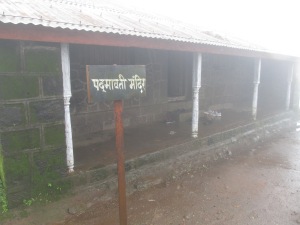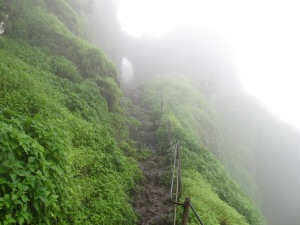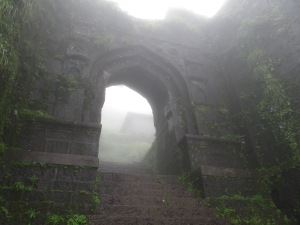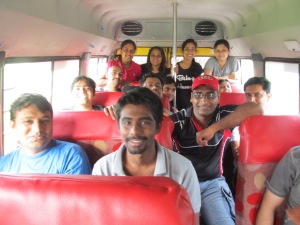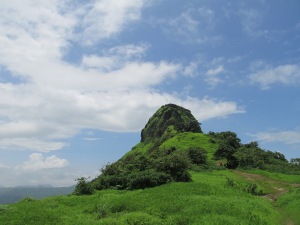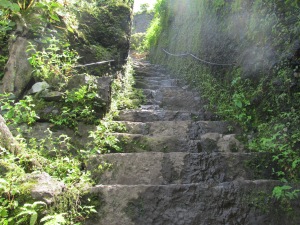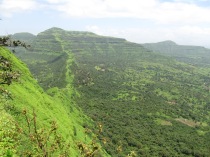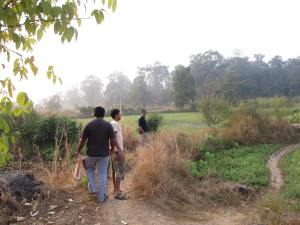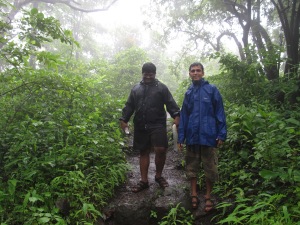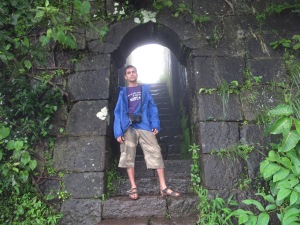Rajgad – literally means King of Forts! I have been craving to visit this place for years, but somehow was not able to make it. This fort is said to be and is actually a must visit for any trekker! It is huge and majestic. Historically, it is arguably the most important fort with respect to Shivaji maharaj’s fight for Swarajya. Even more important than Raigad.
About the Fort
Rajgad, most aptly described as the King of forts. At 1395 metres it literally gives an eagle’s view of the surrounding region. It has three machi’s called Sanjeevani, Suvela and Padmavati. The Bale Killa (Bastion) of this fort is well known for it’s peculiar characteristics. There are many routes to climb this fort. One route can take you from Torna to Rajgad.
The two forts are facing each other and are enjoined by a range of hills. It can be a tiring trek of 8 to 9 hours. The royal route or the Raj rasta comes all the way up from Pali village and takes you through the Pali Darwaja which is located on the northern side. It had broad stone cut steps and is an easy access up the fort.
Presently the most used pathway goes from Gunjavne village and instead of taking us to Gunjavane Darwaja, forks to the right and takes us to Chor Darwaja on Padmavati Machi. Gunjavne Darwaja on the south-east side is not much in use due to thick vegetation surrounding it.
The Day Begins
Rajgad is almost 250 kms from Vasai so it was going to take us any where between 5 to 6 hours of traveling from Vasai to Rajgad Base village. We didn’t had the luxury to push the schedule to the second day. Hence we decided to start at 3:00 in the morning, to give us some extra time. We started accordingly at around 3:00 AM and managed to reach Gunjavne village at around 8:30 AM after spending almost 40 mins for searching this place. After a small snack break, we started our trek at around 9:00.
It was raining very heavily, and the view of the surrounding area especially the valley was getting better and better. The trail from Gunjavne was leading us to Padmavati machi. The peak was covered under fog and hence was not visible until we reached close to it. The path until Padmavati machi is not very difficult with few rock patches in between. The authorities have built iron railings at places wherever it is a bit risky. It took us a couple of hours to reach Padmavati Machi.
On Reaching the Summit
On the summit we can visit four major parts of the fort – the three machi’s and the bale killa. Padmavati machi is broader than the other two, Suvela and Sanjeevani. The ruins of Rajwada, Gunjavne Darwaja, a few temples, Queen Saibai’s tomb and Sadar could be found on this machi . They are fading reminders of the forts glory.
Padmavati temple is in a fairly good state today due to renovation done recently. As one moves away from Padmavati machi with the bale killa on the right there is a small Bhagirathi temple on the other side.
As we move from Padmavati machi keeping the bale killa to our left, we approach Sanjeevani machi. This machi is enjoined with Budhala machi on Torna by a range of hills between the two huge forts. Since we were running short of time, we skipped the Sanjeevani and Suvela machi and moved directly towards the Bale Killa.
Bale Killa is the crown of Rajgad. It has a unique triangular structure and a single point access. The tricky section is a vertical climb of around 20-25 feet with small holds in the cliff. It is a road to heaven on the slightest mistake. The authorities have tried to build some railings, but the trail remains risky. But the risk is worth the view on top. After climbing the difficult section, we reach the Maha Darwaja. After killing Afzal Khan, his head was sent to Rajgad and was buried near this door following all religious processes. There are a couple of temples, and a small crescent shaped lake called Chandratale on the bale killa. It offers an enchanting view of Padmavati, Sanjeevani and Suvela machi.
For almost 25 years this fort was Shivaji Maharaj’s capital. Rajgad boasts of the highest number of days stayed by Chhatrapati Shivaji Maharaj on any fort. The fort has witnessed lots of historic events, including the birth of Shivaji’s son Rajaram, the death of Shivaji’s Queen Saibai, the return of Shivaji from Agra, the burial of Afzal Khan’s head in the Mahadarwaja walls of Ballekilla.
This fort was also one of the 12 forts that Shivaji kept when he signed the Treaty of Purandar (1665) with the Rajput king Jai Singh in 1665 who was leading the Mughal forces. 22 other forts were handed over to the Mughals under this treaty.
We spent some time on the pinnacle and then started descending towards Padmavati machi. We lost our way down to Gunjavne, but fortunately an elderly village lady guided us back till the base village. We had some rest and began our journey back home. We started our journey back at around 3:00 in the afternoon. Taking our morning time as a yardstick we had informed our homes that we’ll reach by 9:00. But whatever energy we had in us was further used up in huge traffic which we encountered first near Pune and later again near Thane. Finally we ended up reaching home at 1:30 in the night. It was a long day for us, more than 22 hours. But yes, we had successfully accomplished one of the most challenging treks in our lives. This feeling of accomplishment far surpasses the exhaustion. The King of Forts is any time worth the pain! Continue reading
